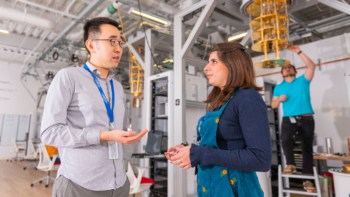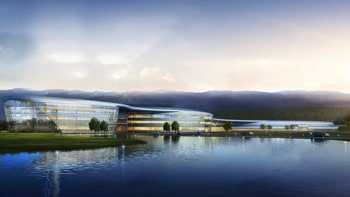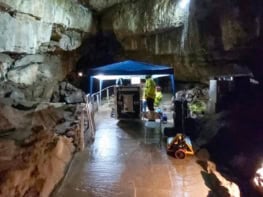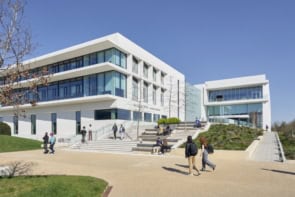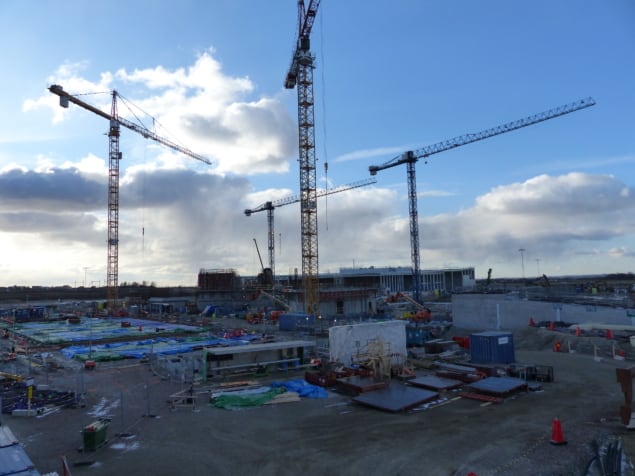
With an icy wind whipping into southern Sweden from Siberia, the site on which the European Spallation Source is being built was not the most clement place when Physics World visited earlier this week.
My colleague Margaret Harris and I had travelled to Lund to catch up with the latest progress on the ESS, which – when complete in 2025 – will be the most advanced facility for neutron scattering in the world. It will outstrip the likes of the Spallation Neutron Source in the US, ISIS in the UK and the China Spallation Neutron Source.
With the late-afternoon Sun casting long shadows over the freezing 65,000 m2 building site, we were accompanied on our tour by John Womersley, the British physicist who took over as director-general of the ESS in 2016.
Decked out in hi-vis jackets, safety helmets, glasses and gloves for our tour of the construction site, Womersley explained how the ESS is a consortium of 15 European nations and will cost a total of €1.84bn to build.
Work started on the project in 2014 and is now 40% complete. This year is the peak period for building activity and there are currently 500 workers on site. “So far things are going quite well,” Womersley said as he led us from the warmth of the lab’s temporary office accommodation through security turnstiles to the construction site. “We are more or less on schedule.”
Our visit to the ESS formed part of the inaugural Big Science Business Forum, which is taking place in Copenhagen this week. Most big-science facilities – be it CERN, the European Southern Observatory or the European Synchrotron Radiation Facility – are known for their cutting-edge research. But these facilities are also hotbeds of advanced technology, offering opportunities for businesses to make money and to hone their technological innovation.
The ESS is no exception, requiring everything from radio-frequency power sources, accelerator components and vacuum equipment to cryogenic kit, neutron detectors, control systems and IT resources.
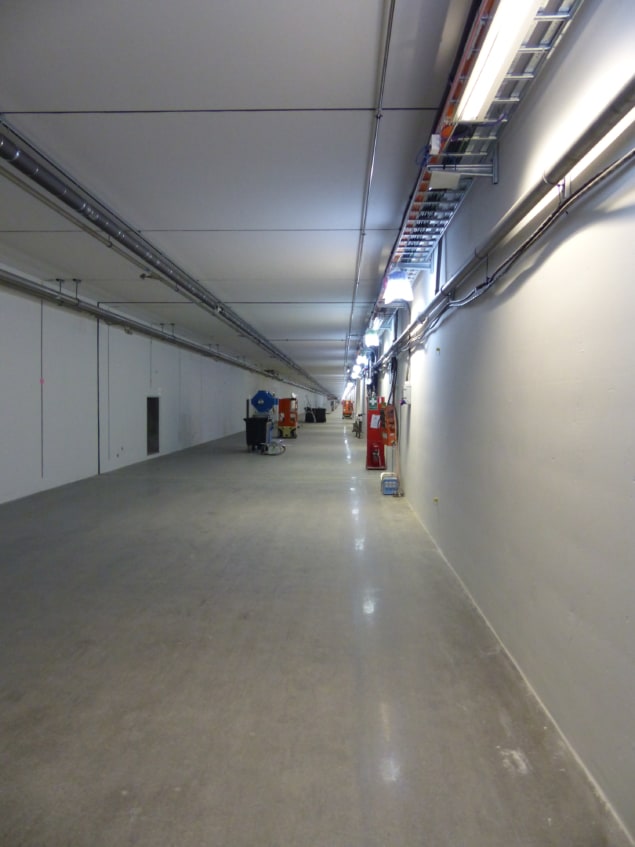
When complete, the ESS will consist of a 500 m-long linear proton accelerator with an average beam power of 5 MW, making it the world’s most powerful such device in the world. It will accelerate protons to an energy of 2 GeV before smashing them into a rotating, helium-cooled tungsten target wheel, some 2.6 m in diameter. The protons will split, or “spall”, the tungsten nuclei to yield 10 pulses of neutrons every second. The tungsten rotates to prevent it from overheating – if the protons were fired into a fixed target, it would be in danger of melting, such is the heat load of the beam.
These pulses will then be slowed down, or “moderated”, by bouncing them off the inside of a waveguide cooled by liquid hydrogen, and sent to 15 experimental stations in three experimental halls the size of seven football pitches. When the first experiments on the ESS begin in 2023, users will have seven instruments to pick from. The full programme of activity, with 22 instruments covering large-scale structure, diffraction and spectroscopy, will be ready two years later, although longer term there is capacity for 40 instruments in total.
Neutrons have several well-known advantages when it comes to probing matter. They are charge neutral, which means they penetrate deeply into samples. They have a spin of one half, allowing them to probe magnetic materials. And because they scatter off atomic nuclei, there are therefore sensitive to light elements and isotopes, such as hydrogen. X-rays, in contrast, scatter in proportion to the density of electrons in an atom, meaning they work best only with heavier atoms.
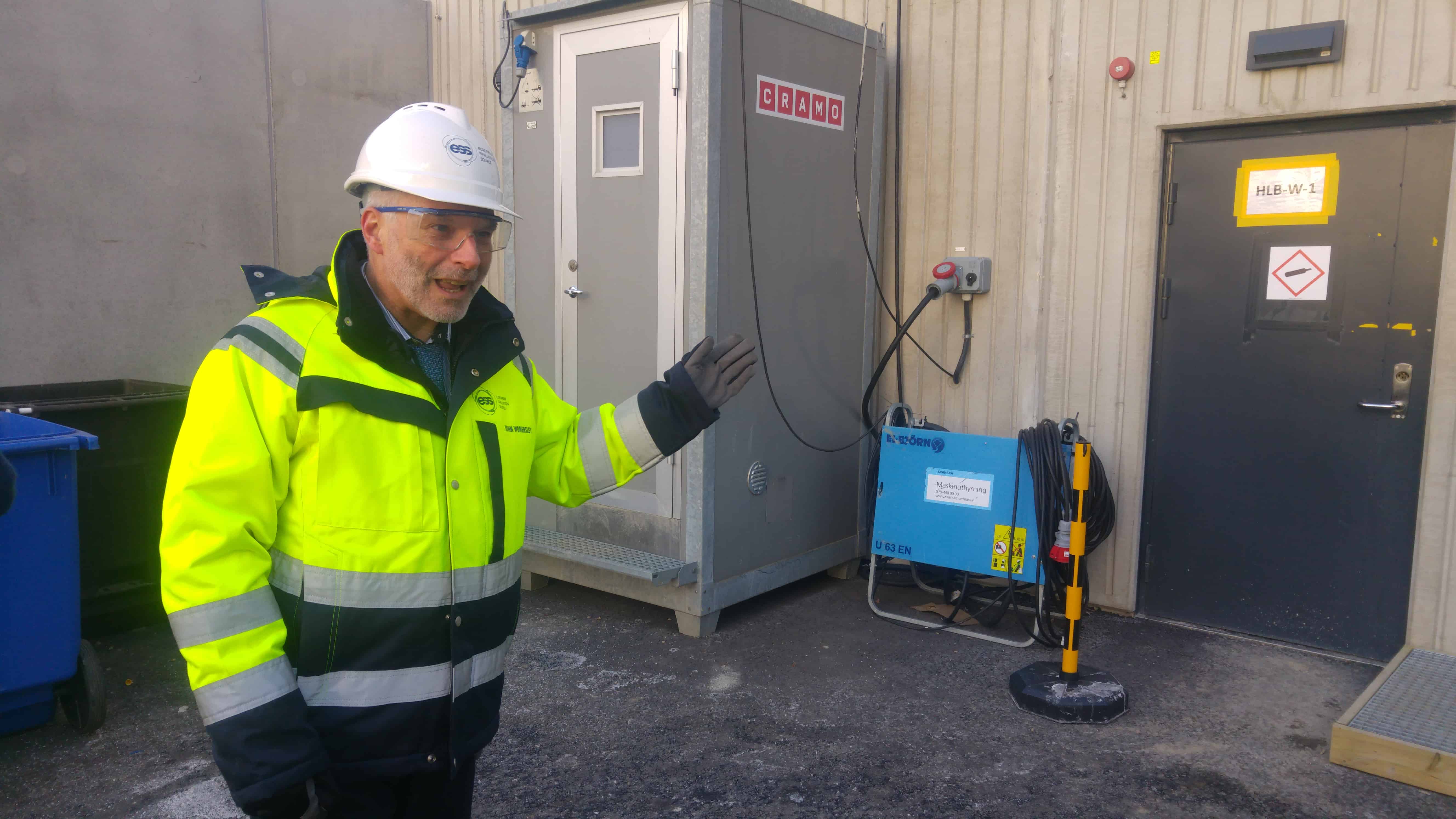
Most of the ESS seems a bit of a mess – well, it is a building site – and it is hard for the untrained eye to get a sense of how it will finally look. Part of the reason is that the main proton accelerator is hidden five metres underground, currently accessible only via an inconspicuous dark-grey door.
As Womersley led us through and down a metal staircase, he explained that the tunnel is located underground to keep environmental conditions for the beam as stable as possible and to ensure that, should the beam veer off accidentally into the sides of the magnets that focus it, no-one will be at risk from the dangerous X-rays that would be created.
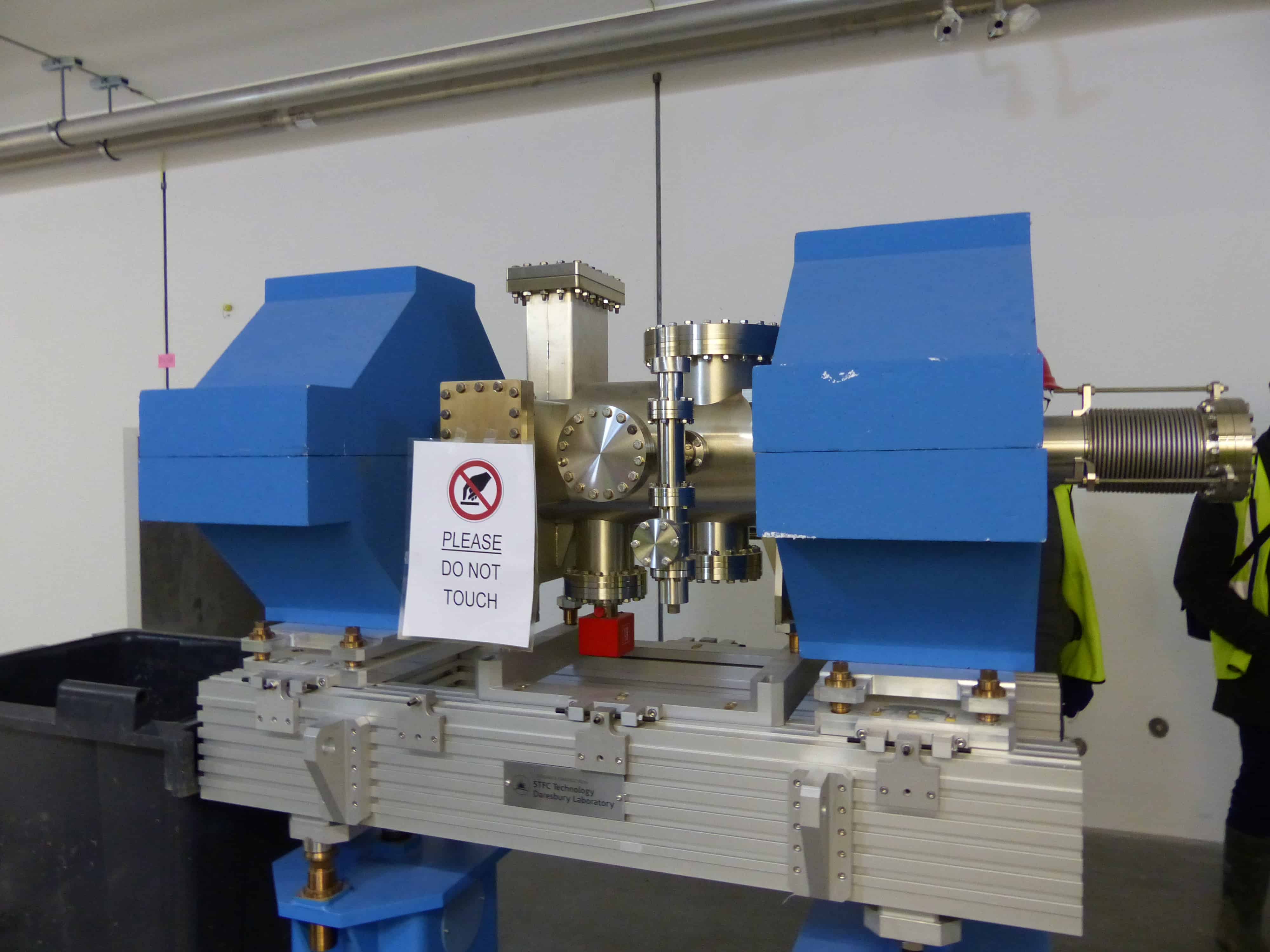
With white walls and fluorescent lighting, the tunnel stretches into the distance and is largely empty. But over the next three years, it will steadily be filled with 36 metal cavities, each of which will receive radio-frequency (RF) waves sent via waveguides from five-metre-tall klystrons sitting in a large “gallery” building above ground that looks like the inside of a warehouse. The cavities will transfer power to the beam, effectively kicking the protons down the tunnel.

One novel feature of the metal cavities is that they will be cooled to cryogenic temperatures so that they superconduct and therefore transfer the RF power with almost 100% efficiency, with none absorbed by the cavity. There are already two klystrons being kitted out in the gallery, with Womersley explaining that the first prototype cryomodule is set to be tested in July. Hatches have already been built into the walls of the tunnel to allow the waveguides to pass through from the klystrons above.
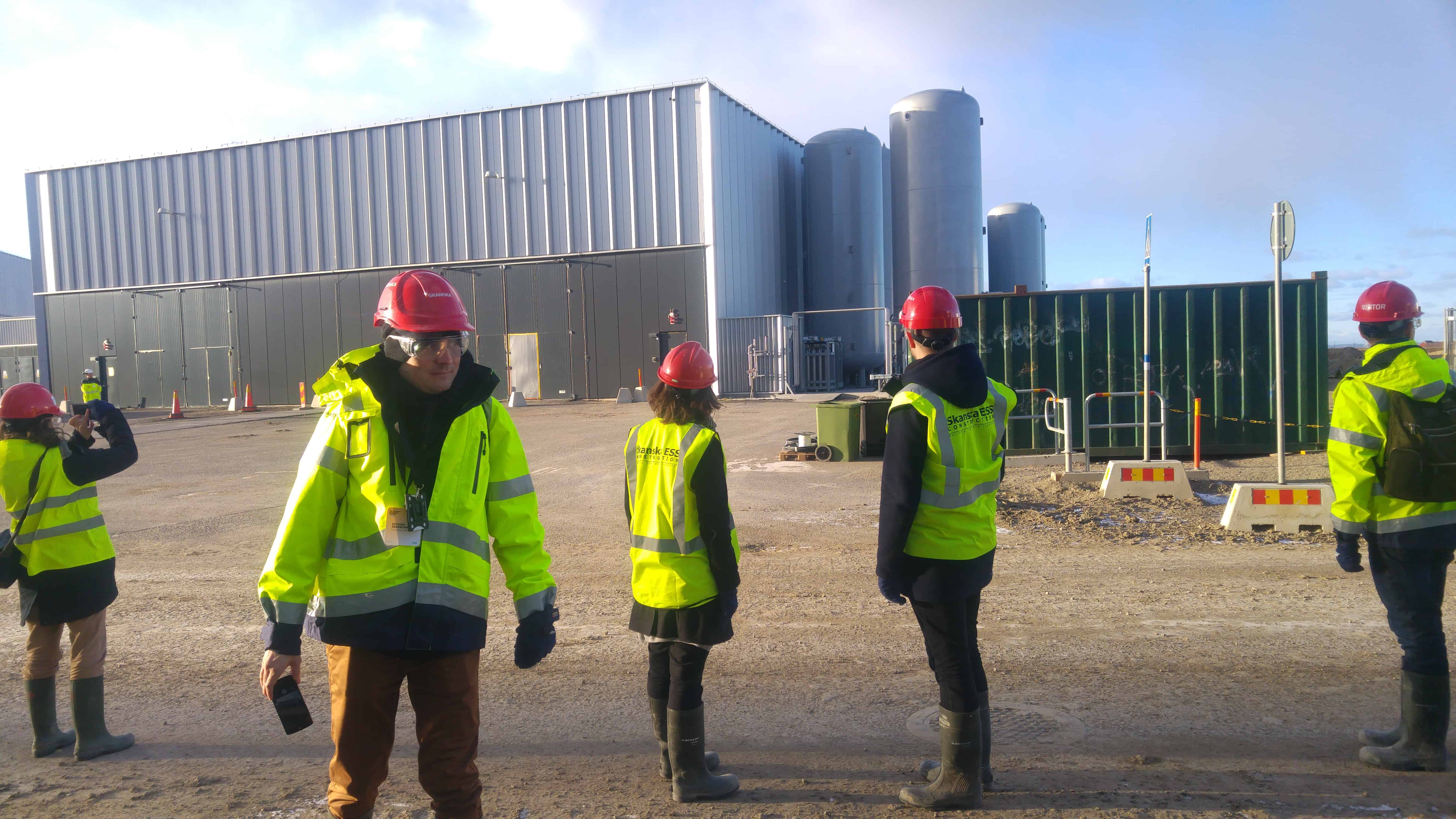
Back in the open air again, Womersley pointed out three helium cooling towers rising above the rubble. Built in Liverpool, they will eventually be used to recycle the 3.5 tonnes of helium needed for the ESS. Indeed, sustainability is the name of the game for the ESS. Although the lab will take a whopping 25 MW of power from the local electricity grid to run the accelerator, all waste heat will be connected to Lund’s heating system rather than just being vented into the atmosphere.
The heat is in fact just one benefit to the local economy of the ESS, which will eventually have 400 scientists, engineers and ancillary staff working permanently on site. Local shops, hotels and businesses will also gain from the thousands of scientists who will visit each year. And with the existing MAX-IV synchrotron barely a few hundred metres away from the ESS, there are ambitious plans to create a “Science Village Scandinavia” in the land between the two facilities.
The ESS is certainly an ambitious project, with the neutrons set to be used in everything from soft matter, chemistry and energy to magnetism, geophysics, basic physics, archaeology and heritage conservation. “Our plan is for the ESS to run 95% of the time for 200 days per year,” says Womersley, “so we need a machine that is reliable.”
Meanwhile, Denmark – the joint host with Sweden of the ESS – will be boosted by an IT and data centre in Copenhagen that will employ 60 staff. The idea is that all data generated in experiments at the ESS will be “open” once a three-year period has elapsed, which will allow anyone, in principle, to analyse results obtained at the lab.
As we headed back to the Danish capital over the Øresund bridge with the red Sun setting in the west, I was left with a warm, fuzzy feeling of Europe with its open science and open borders. Quite why Britain wants to quit the EU, when there is so much to play for in building a strong European science base, I simply cannot fathom. It was a question I was to put to Womersley at the BSBF meeting back in Copenhagen. Stay tuned for his response.
